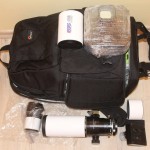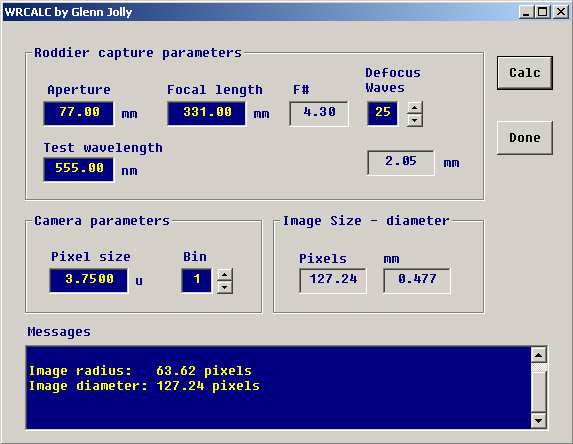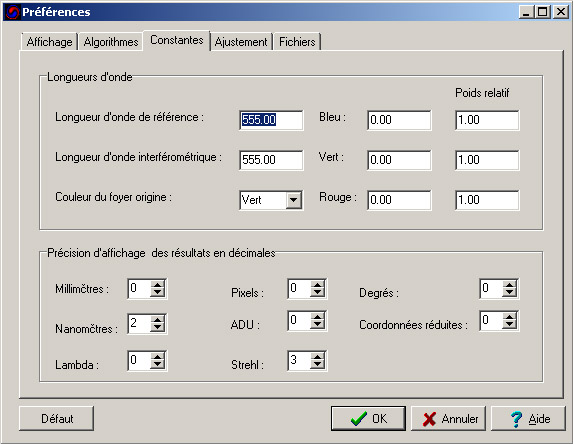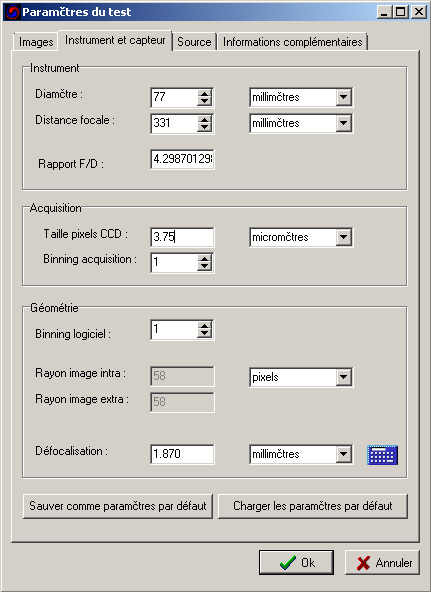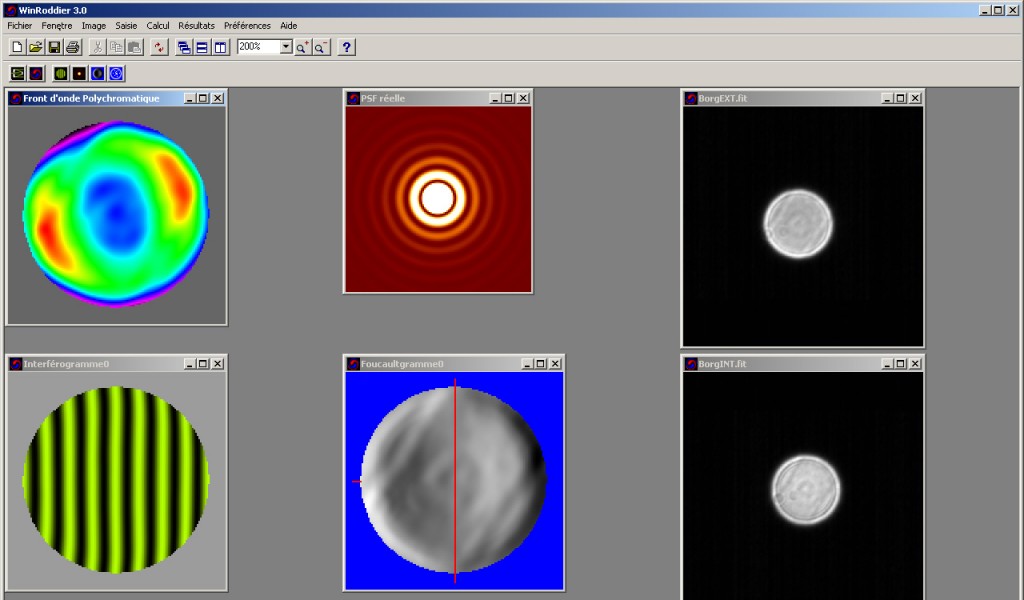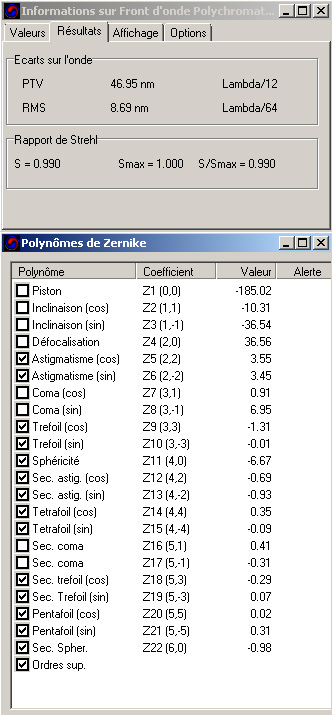In this short test I have focused on Roddier Analysis using WinRoddier 3.0 software that is now very easy to use especially with WRCALC utility that calculates the major parameter – how many pixels should the defocused star occupy on the chip of the camera used to capture data along with focus travel in order to reach such a defocus (either inward or outward from focused bright star in the middle of the FOV) valid for tested wavelength, see:
It is important to do the test for selected wavelength which is set in the preferences window of WinRoddier:
Don’t forget to adjust Strehl precision to 3 to see other value then 0 or 1 in the results window!
Also, for my testing, I have adjusted Preferences->Algorithmes->Nombre maximal d’iterations from 3 to 7. All other values were left unchanged (default).
Comment:
It looks too much perfect to me (Strehl 0.989), but it’s true that in Green color the Borg really performs very, very well (as well as in Red and all narrowband, obviously) so next time I should test the Blue color too as Blue (and Luminance) is the „worst“ – has biggest FWHM of stars even in perfectly focused images.
To support my words on performance in Green, here’s a sample image (raw, unprocessed, Light frame) took on 1st of February 2014 on Tenerife at 2300m above sea level. The only drawback is that the JPG quality was set to 50% due to file size limits (1MB) on my blog.
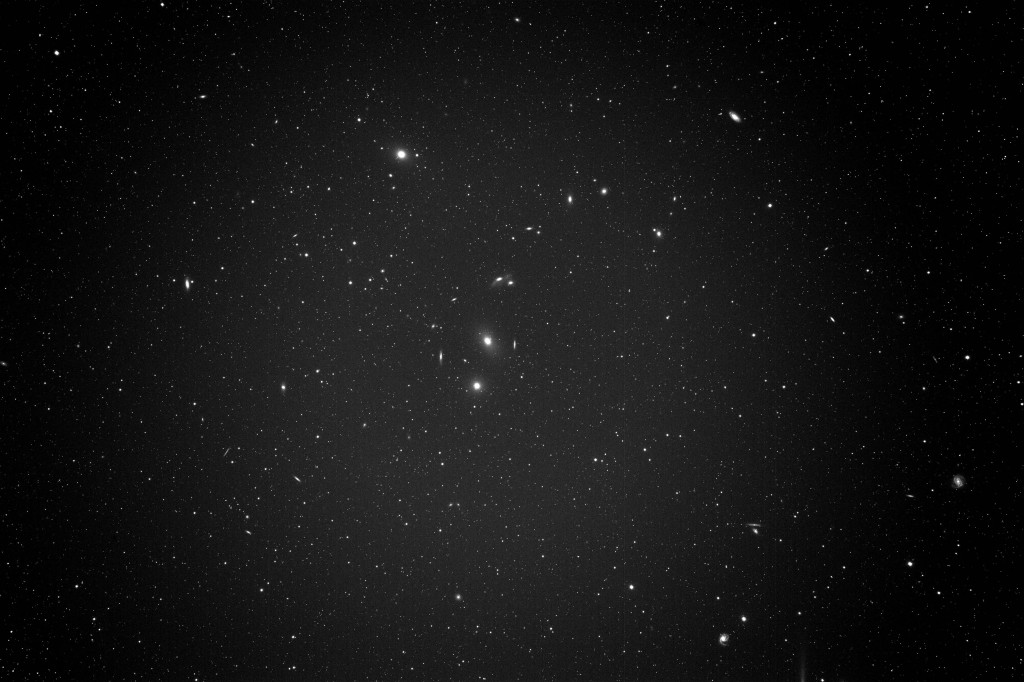
References
Borg 77EDII Astrograph – an user “review”
Projet WinRoddier

